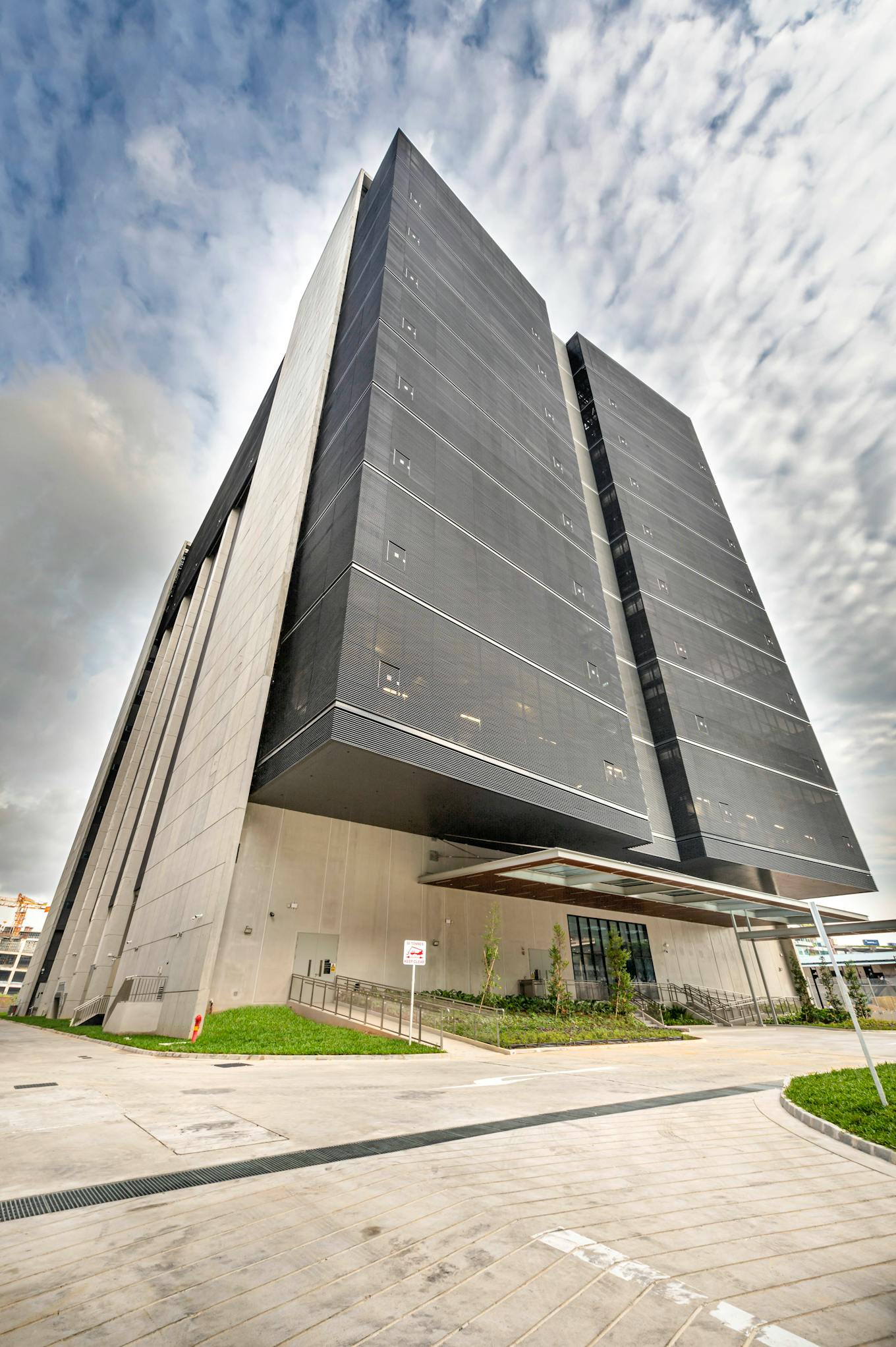Raising energy efficiency and reducing power consumption have long been mainstays of data centres’ efforts to becoming more sustainable. While such upgrades in data centres have kept the increase in energy consumption in check without sacrificing performance, the ever-rising demand for internet usage and speedy transactions means that further gains in sustainability requires all stakeholders to work together, said experts at a panel on greening data centres in Singapore.
The private session held at the Four Seasons Hotel in central Singapore on June 23, 2022 was organised by Eco-Business and digital infrastructure firm Equinix. Eco-Business was given access to report on the event.

SG5, an Equinix International Business Exchange™ (IBX®) data centre in Singapore. Image: Equinix.
“When considering the future of where data will sit, I don’t believe it will be all in one place,” said Darren Yong, head of media and communications technology at accounting firm KPMG, citing the rise of blockchain technology and real-time payment systems.
“We now have a responsibility on how we manage this, because for every gigabyte, terabyte, petabyte, of data being stored or processed, cooling is required,” Yong added. Cooling accounts for close to 40 per cent of the energy consumption at Singapore data centres, as servers and computer systems run hot under load.
Data centres could work with customers to shift less critical information off real-time servers, a move that could both cut energy use and costs, suggested experts at the event.
They added that facility operators could also work out common equipment standards to better leverage shared cooling systems. Such systems are generally more efficient than having each building install individual chillers.
Greater self-regulation in the industry could help too, said Yee May Leong, managing director for South Asia at Equinix, pointing to Europe’s Climate Neutral Data Centre Pact. Signatories to the pact, including Equinix, Google and Intel, set power and energy efficiency targets, and use clean energy sources in their European facilities.
Such a pact does not exist in Singapore. Instead, the city-state had imposed a moratorium on new data centres since 2019, as larger data centres built on the city-state drew increasingly heavily on its power grid. The 70-odd data centres today use about 7 per cent of Singapore’s electricity, which is generated almost entirely from natural gas.
Singapore’s government has announced it intends to issue new construction permits this year, but it is also mulling stricter rules, such as efficiency standards and capacity limits. The industry believes the first round of new permits would be capped at 60 megawatts, about 5 per cent of existing capacity.
“It is really important for us to connect with our stakeholders and learn from each other how, as we build data centres to support Singapore’s digital economy, we can also work together to ensure that we meet the goals of the Singapore Green Plan,” Leong added. The Singapore Green Plan spells out the city-state’s sustainability agenda in areas like clean energy, green buildings and new jobs. Singapore wants to achieve net-zero emissions by around 2050.
New facilities could go lighter on the environment if the collaboration starts at the planning stage, said Esther An, chief sustainability officer of Singapore real estate firm City Developments Limited.
“Buildings have long life cycles. You acquire land, plan with architects and engineers, subcontracted suppliers on building and managing everything,” An said. In Singapore, emissions from constructing a building could make up 40 per cent of the facility’s total emissions over its lifespan, although the figure is likely lower for data centres due to its high operating energy consumption.
“To achieve net-zero emissions, you need to work with everybody,” she added.
Doing good with data
The world shouldn’t skimp on online tools in fighting climate change, said experts on the panel.
For example, rigging buildings with sensors to switch on air-conditioning only when rooms are occupied could help save on electricity bills, Yong said. It was a chance some firms missed during the Covid-19 pandemic, when they had to keep the air-conditioning on in office blocks for the few staff members who couldn’t work from home, he added.
Data on firms’ carbon footprints are also essential in maintaining fair play amid the need to rapidly slash emissions, An said.
Southeast Asia has one of the fastest growing digital economies in the world, which is projected to reach US$1 trillion this decade, according to Google.
“We need to have the right infrastructure to host that, to provide the options for customers coming from the rest of the world, and also to provide a platform for new unicorn start-ups and financial technology firms to reach out to the rest of the world,” Leong said.
Don’t wait on hydrogen
Singapore has been pumping millions of dollars into research on how green hydrogen – made by splitting water atoms using renewable energy sources – could replace natural gas in industrial applications.
Local data centre players have also started looking into building small on-site hydrogen turbines in recent years.
But green hydrogen is still many times more expensive than natural gas, nor is much of its supply infrastructure commercially available today.
“Harnessing hydrogen and getting it to commercial levels is five to 10 years (away). We’re already in 2022. We cannot just sit and wait,” Leong said, adding that nature-based offsets and renewables need to play a bigger role in the meantime.
An said Singapore firms should also work with the national building and construction authority, which provides grants for energy efficiency upgrades.
Participants at the event also suggested that technology firms help consumers cut down on “rubbish” data – such as very old photographs stored in personal online storage sites.
Vijay Sirse, chief executive of Singapore renewables firm Destiny Energy, said data centre operators could manage their electricity demand better, as traditional infrastructure often had many layers of redundant systems for security and online connectivity.
There is software available today to maintain such reliability without huge energy inputs, Vijay told Eco-Business.
“Things have changed in the last 10 years or so. There’s a huge opportunity for data centres in scientific power demand management,” he said.
Equinix’s Leong says that the data centre industry is focusing its attention on the issue of sustainability and reducing its carbon footprint on the whole.
“We are continuing to raise (the bar) in terms of working on efficiencies, investing in innovations, looking at all our supply chains and working with our partners and suppliers,” she added.













